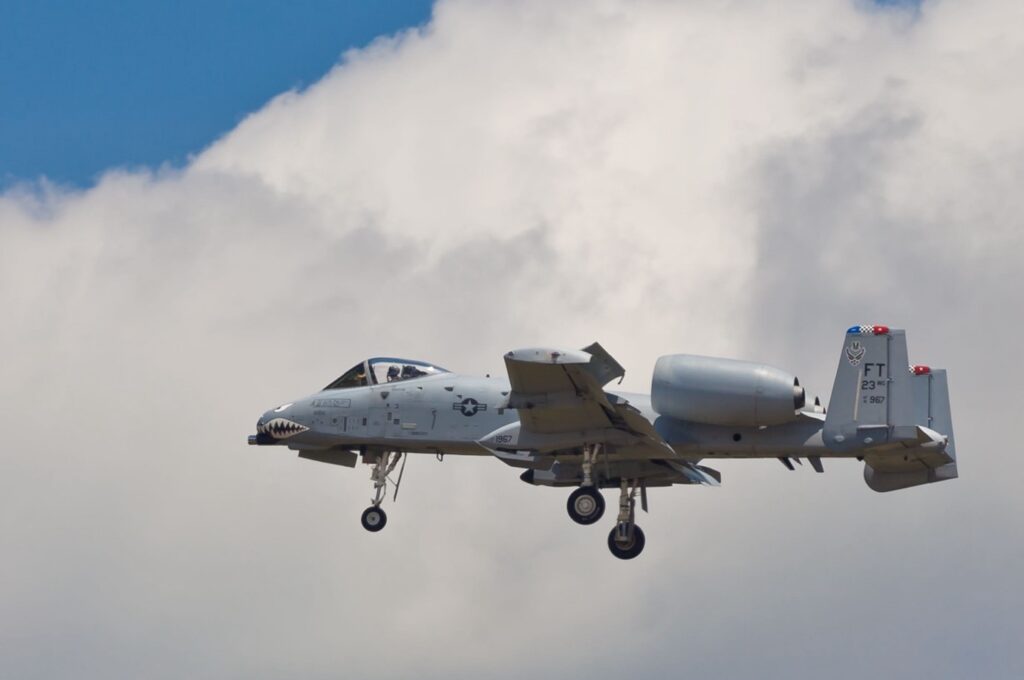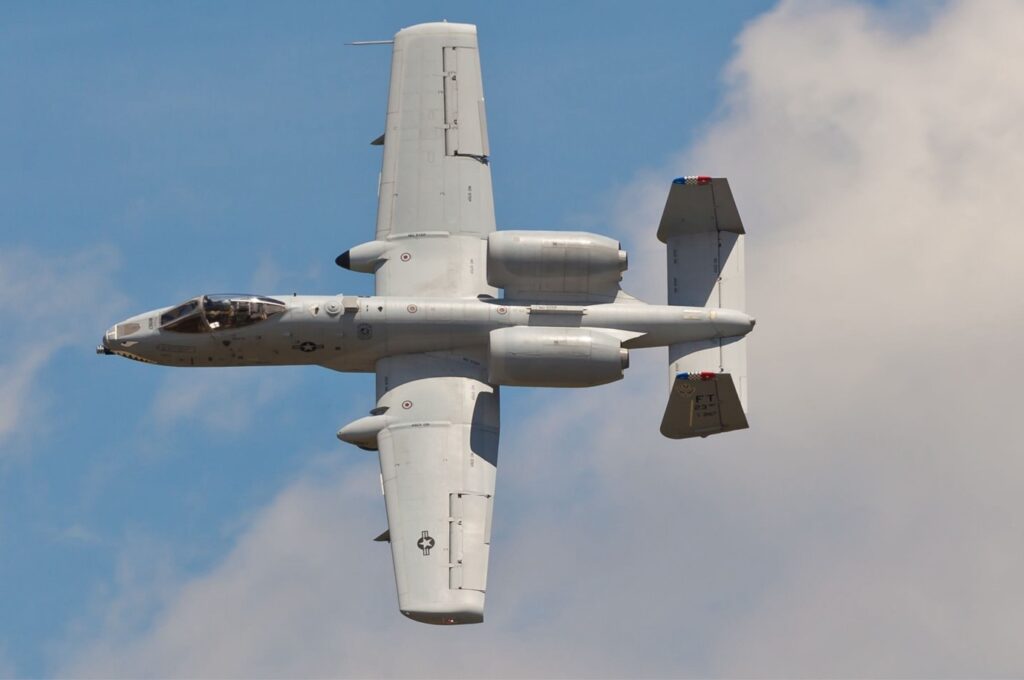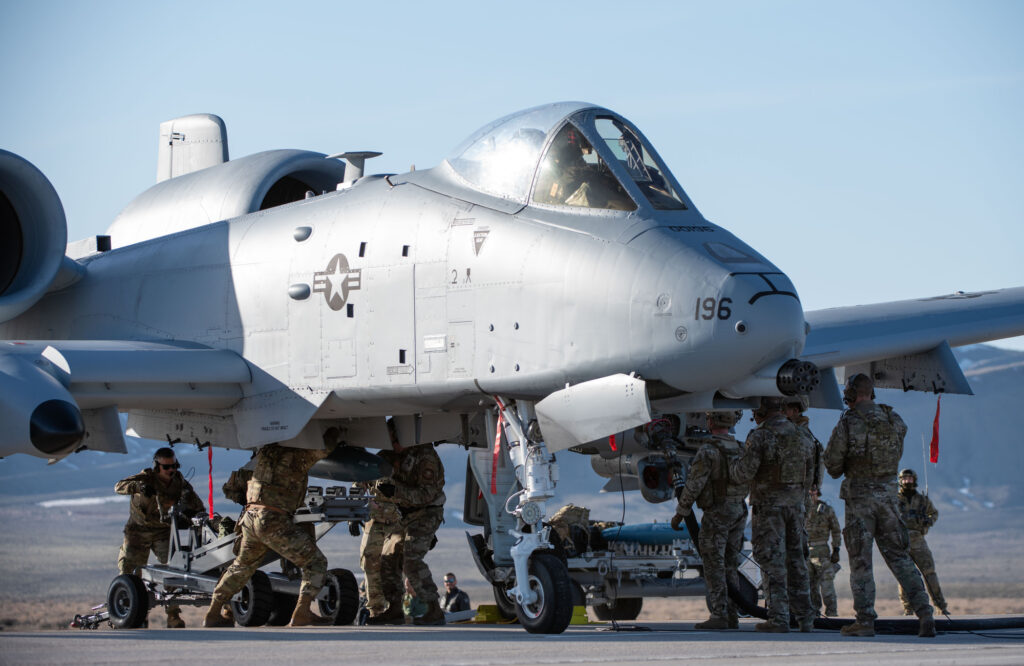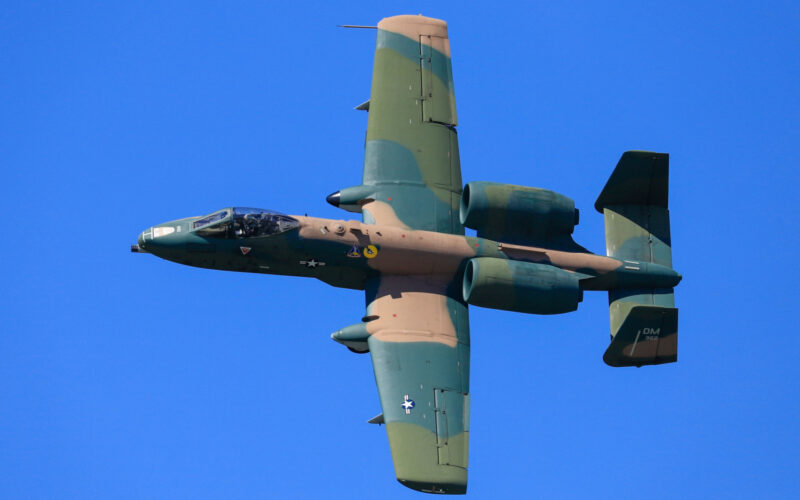The A-10 Warthog Thunderbolt II, nicknamed the ‘Warthog’, has proven itself as a mainstay within the world of military aviation, with a service history spanning over half a century. Designed to provide close air support (CAS) to ground forces, this legendary aircraft has managed to withstand the test of time.
In this article, we’ll delve into its fascinating history, mission, performance, variants, price, current operator, and deliveries, plus the future that lies ahead for this legendary attack aircraft.
History
The A-10 Warthog story began in the late 1960s when Fairchild Republic Corporation (now part of Northrop Grumman) designed and built an aircraft to answer the A-X program. The tender demanded an aircraft that would fill the CAS role previously held by the A-1 Skyraider during the Korean War and the Vietnam War.
A subsonic jet – that is, one that flies at less than the speed of sound – the A-10 Warthog Thunderbolt II entered service with the United States Air Force (USAF) in March 1976. To maintain its relevance, over the years the A-10 has received numerous upgrades, including new avionics, weapons systems, engines, and wings.
A-10 Warthog’s mission
The primary mission of the A-10 Warthog is to provide fire support to troops on the ground. Its capacity for hovering over a battlefield for extended periods, its impressive firepower, and its ability to take damage and keep on flying make it a formidable asset in supporting ground forces engaged in combat.

Performance
The A-10 Warthog’s performance is nothing short of exceptional, making it a standout in the world of military aviation. Here’s a closer look at its remarkable capabilities:
- Unique Design: The A-10’s twin-engine, straight-wing design is distinctive and purpose-built. This configuration provides several advantages, including stability and lift at low altitudes, making it a highly maneuverable aircraft. Its overall rugged design, featuring 1,200 pounds (540 kilograms) titanium armor box known as the ‘bathtub’, is made to protect the pilot from ground fire and is optimized for survivability on the battlefield. It is also designed for easy maintenance and repair in austere conditions.
- ‘Tank-Killer’ Reputation: The A-10 earned its moniker as a ‘tank-killer’ for a reason. Central to this capability is the GAU-8/A Avenger 30mm rotary cannon. This seven-barrel Gatling gun is specifically designed to penetrate enemy armored vehicles, using 30×173mm PGU-14/B armor-piercing projectile with depleted uranium core. Its firing rate of 3,900 rounds per minute makes it a fearsome weapon on the battlefield.
- Low-Speed Advantage: One of the A-10’s defining characteristics is its relatively low cruising speed of 300 knots (560 km/h). While some fighter-bombers are built for high-speed intercept and evasion, the A-10’s slower pace is a strategic advantage in the ground-attack role. This slower speed allows for more accurate targeting and improved visibility when operating at low altitudes, which contributes to its effectiveness in supporting troops and engaging ground targets.
- Engines: The A-10 Warthog is powered by two General Electric TF34-GE-100A turbofan engines, each generating a thrust of 9,065 pounds-force (40.32 kN). These engines are well regarded for their durability and performance, making them an ideal choice for an aircraft designed for CAS missions.
General specifications
| Specs | A-10C |
| Crew | 1 |
| Length | 53 ft 4 in (16.26 m) |
| Wingspan | 57 ft 6 in (17.53 m) |
| Height | 14 ft 8 in (4.47 m) |
| Gross Weight | 30,384 lb (13,782 kg) |
| CAS Mission | 47,094 lb (21,361 kg) |
| Anti-armor Mission | 42,071 lb (19,083 kg) |
| Maximum Takeoff Weight | 46,000 lb (20,865 kg) |
| Fuel Capacity | 11,000 lb (4,990 kg) internal |
| Engines | two General Electric TF34-GE-100A turbofans |
| Thrust (per engine) | 9,065 lbf (40.32 kN) |
Performance specifications
| Performance | A-10C |
| Maximum Speed | 381 kn (706 km/h) |
| Cruise Speed | 300 kn (560 km/h) |
| Combat Range | 250 nmi (463 km) |
| CAS Mission Range | 250 nmi (460 km) can loiter 1.88 hours at an altitude of 5,000 feet, with the capacity for 10 minutes of active combat |
| Anti-armor Mission Range | 252 nmi (467 km) when conducting sea-level penetration, exiting, and engaging in combat for 30 minutes |
| Service Ceiling | 45,000 ft (13,700 m) |

A-10 Warthog Thunderbolt II variants
Over the years, the A-10 has been through various iterations and upgrades, from the A-10A to the A-10C and several experimental models. The A-10C is the most modern version, featuring advanced avionics and weapon systems.
Here’s a closer look at these A-10 variants:
YA-10A
A pre-production version of which 12 units were manufactured.
A-10A
The initial production version designed for single-seat CAS and ground-attack missions.
OA-10A
A variant of the A-10A used for airborne forward air control.
YA-10B Night/Adverse Weather (N/AW)
An experimental prototype featuring two seats, designed for night and adverse weather operations. The sole YA-10B prototype was converted from an A-10A.
A-10C
A version of the A-10A that underwent updates as part of the incremental Precision Engagement (PE) program.
A-10PCAS
An unmanned version proposed by Raytheon and Aurora Flight Sciences (now part of Boeing) in 2012 as part of DARPA’s Persistent Close Air Support program. After a successful demonstration campaign that concluded in 2015, the initial idea of using an optionally manned A-10 was later dropped.
Price
As of 2023, the A-10 Warthog comes with a baseline price tag of approximately $13.4 million per aircraft. This figure encompasses the initial procurement cost, training expenses and transfer fees. Additionally, it’s important to factor in the continuous expenses related to the repairs and upgrades required to keep the A-10 operating at its optimal performance level.

A-10 Warthog’s current operators and deliveries
The A-10 has only been used by the USAF and its two reserve units, the Air Force Reserve Command (AFRC) and the Air National Guard (ANG). In 2017, there were a total of 282 operational A-10C aircraft, distributed as follows: 141 with the USAF, 55 with the AFRC, and 86 with the ANG.
Future ahead
Following numerous rejections by Congress, the USAF finally obtained congressional approval to initiate the retirement of A-10s in 2023. The projected retirement of all A-10s is scheduled for either 2028 or 2029. Nevertheless, Congress has imposed a temporary halt on any further reductions in the active duty A-10 fleet. This pause will continue until the USAF can demonstrate that other aircraft are capable of effectively taking over CAS missions, which have traditionally been the domain of the A-10.
This year, the Air Force is projected to retire 21 A-10s. As a result, the Air Force’s A-10 fleet will decrease from 281 to 260 aircraft.


